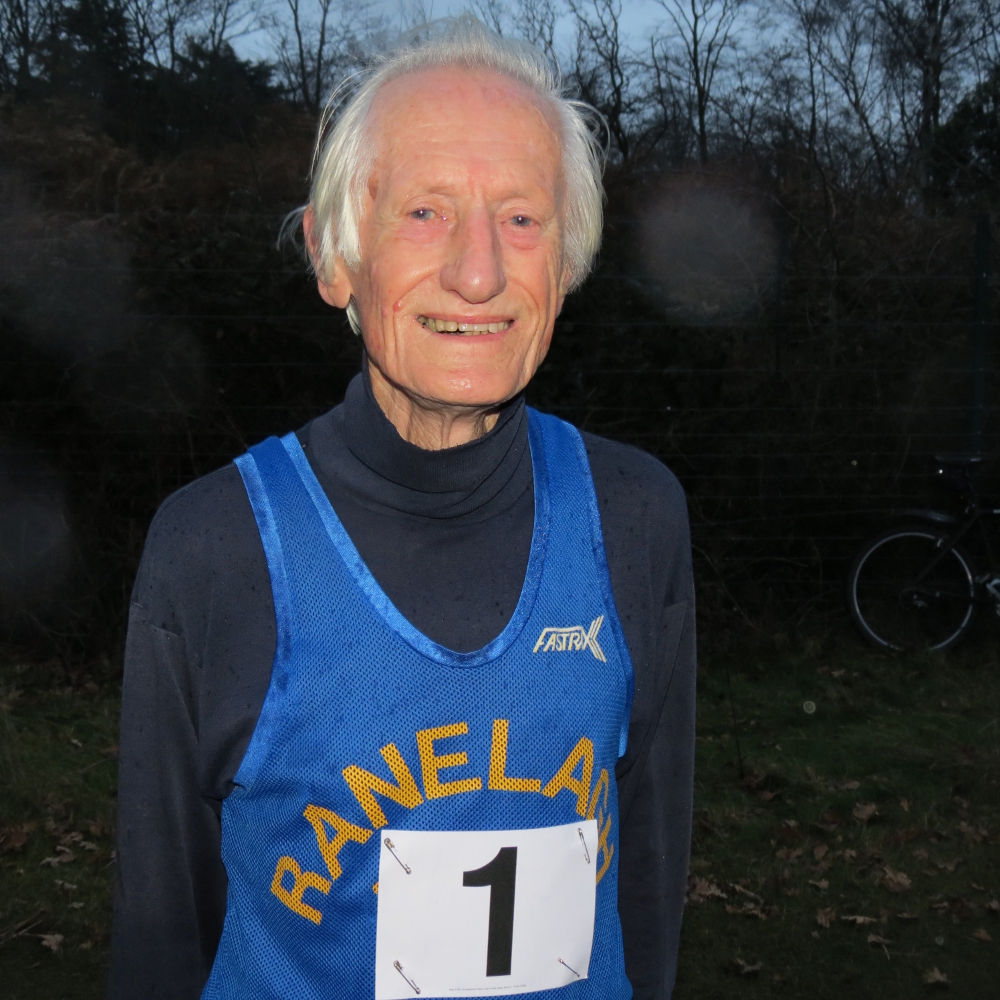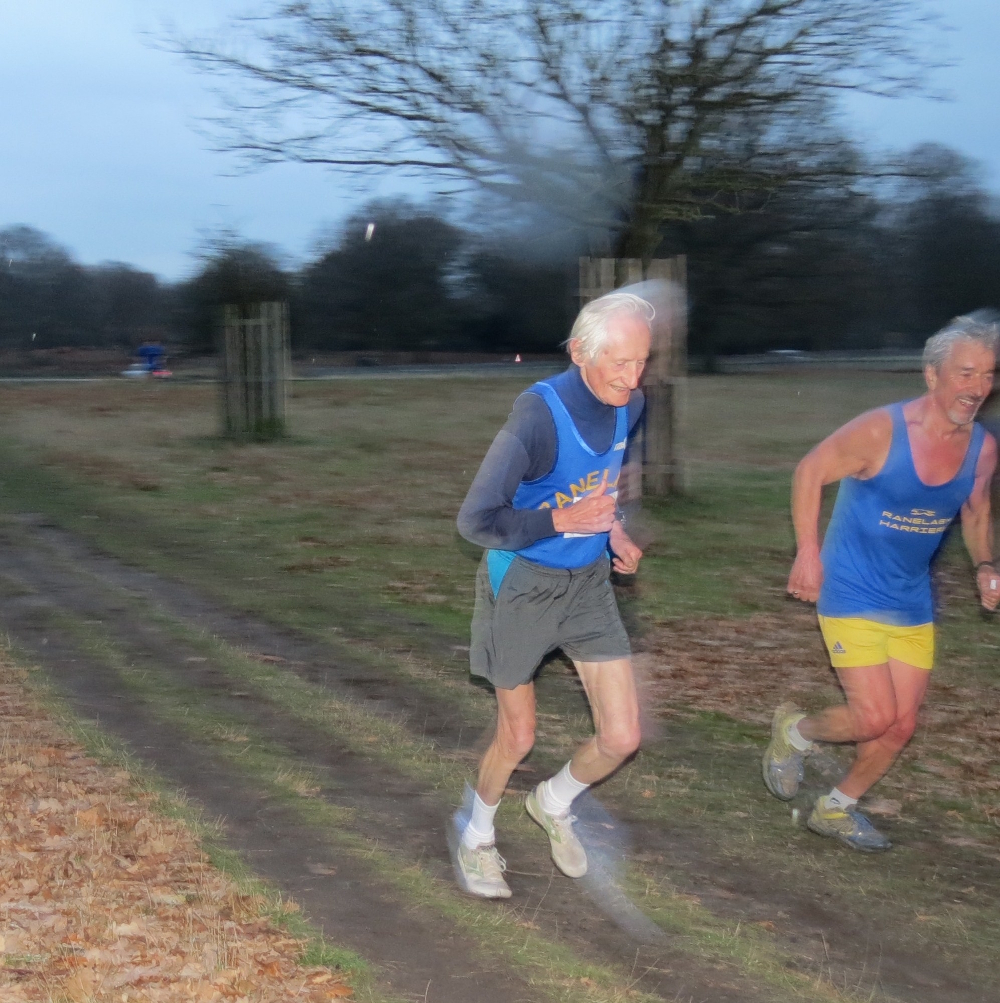Ed Whitlock’s final race
Following his record-breaking run at the Scotiabank Toronto Waterfront Marathon, Ed Whitlock raced twice more before his passing on March 13.

The running world lost a legend on March 13 as Ed Whitlock passed away at the age of 86. The iconic distance runner died at Princess Margaret Cancer Centre in Toronto, near his home in Milton, Ont., after a battle with prostate cancer.
Whitlock was the talk of the community when he broke four hours at the Scotiabank Toronto Waterfront Marathon in October at the age of 85. While that’s the most well-known of his final races, it wasn’t his last. Whitlock raced twice more in relatively low-key races compared to his 3:56 marathon in Toronto that garnered global attention. The English-born runner raced a 15K in New York setting a men’s 85-89 world record in what turned out to be his final road race. His final race, however, came overseas where his athletics career began.
During a late-2016 trip to London, his hometown, Whitlock raced for the final time in a small dual meet between his childhood club, the Ranelagh Harriers, and the South London Harriers. He finished 96th out of 109 runners completing the 7.67-mile (12.3K) race in 1:10:37. Those who have seen photos of Whitlock, or seen him race in person, may recognize the Ranelagh Harriers as he often wore the club’s blue singlet with gold lettering. He holds dozens of world records, from the marathon to shorter track distances, but is arguably best known for his 2:54:49 marathon at 73. The man famous for running laps at his local cemetery remains the only person older than 70 to have ever broken 3:00 in the marathon (4:15 per kilometre pace), a feat he first accomplished at 72.
RELATED: Toronto artist pays tribute to Ed Whitlock by designing shirt and running laps of cemetery.
The annual “mob match” between Ranelagh vs. South London Harriers occurred on Dec. 10. According to club president, Steve Rowland, after the race, Whitlock spoke, at length, with 50 or so Ranelagh members about his life and running career. Over the years, he has maintained close ties with the club often visiting during his trips to England. At the most recent “mob match,” Whitlock was the recipient of “a huge cheer from his counterparts.” The 2016 occasion was the first time that Whitlock had run in one of the club’s mob matches in 68 years. He was appropriately wearing bib #1. (Whitlock’s bib number at the Toronto Waterfront Marathon was often his age, or simply “Ed.”)

Whitlock’s running accomplishments date much farther back than just his masters career. In his early days, he was one of London’s most promising up-and-coming runners going up against Gordie Pirie, who went on to win Olympic silver in the men’s 5,000m in 1956, and Alan Turing, famous for decrypting Enigma code messages during the Second World War. Pirie was associated with the South London Harriers.
RELATED: Timeline: Looking back on Ed Whitlock’s most memorable races.
“Ed’s connection with Ranelagh Harriers dates back to 1948, when as a schoolboy he recorded the first of two consecutive victories in the Ranelagh Cup Schools Race in Richmond Park,” reads Whitlock’s obituary on the Ranelagh Harriers website. “At the time Ranelagh was struggling to rebuild after the Second World War and although Ed turned out in a few races for the club it was felt that a young man of such obvious talent would be better served by being directed to Walton AC, at the time one of the strongest clubs in the London area.”
Passed on by Rowland, below is a copy of a page from the July 1949 Ranelagh Harriers Gazette showing Whitlock’s second victory in the club’s schools race. Not surprisingly, Whitlock was the victor of that race, which was 3.75 miles (6K). An Achilles injury and a move to Canada in his early twenties following college graduation, in part, led to him taking an extended break from running until he was in forties. (As can be seen in Canadian Running‘s winter feature on Whitlock, he did race once in his mid-twenties.)
According to the results, he was attending Surbiton County School at the time of the 1949 inter schools race. He won by 40 seconds in 22:55, which the Gazette called “exceptionally good.” Per the story, the race occurred on Feb. 19 of that year at Petersham located in Greater London making him 17 at the time.
“In what seemed a surprisingly short time a lone figure appeared on the horizon,” reads a particularly descriptive paragraph in the news article. “Within a few seconds we were able to recognize young Whitlock running with deceptive ease to repeat his victory of last year by a similar fairly comfortable margin. Assuredly, here is a young runner with a bright future,” reads a paragraph from the 1949 race report.










